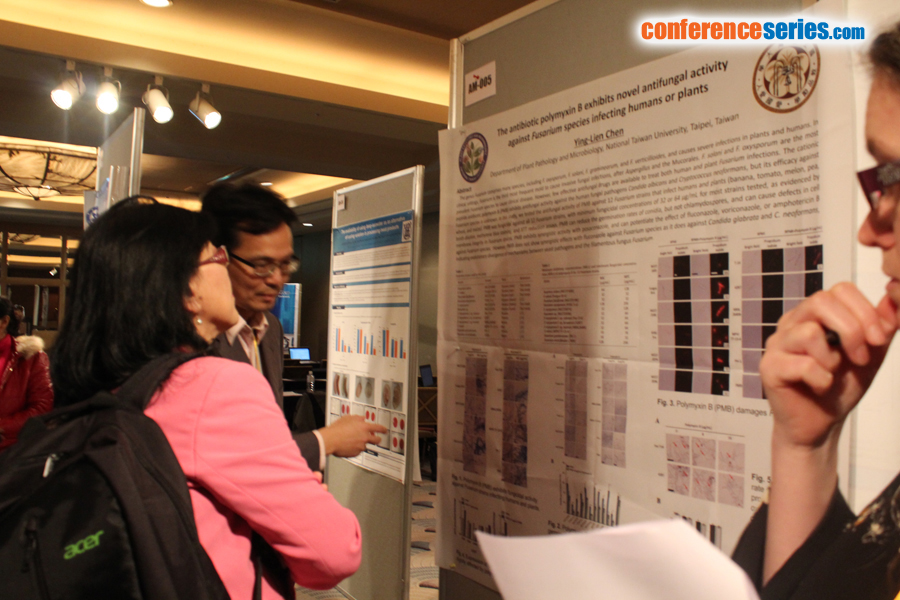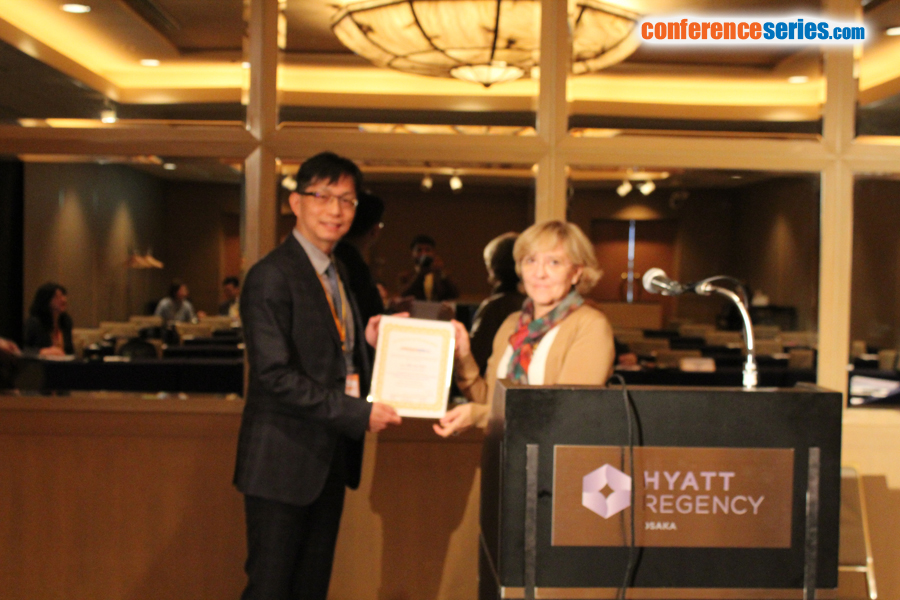
Juhee Ahn
Kangwon National University, Republic of Korea
Title: Comparative assessment of ï¢-lactamases produced by multidrug resistant bacteria
Biography
Biography: Juhee Ahn
Abstract
The multidrug resistance in K. pneumoniae is primarily mediated by the production of different classes of b-lactamases. The relationship between b-lactamase production and resistance phenotype is essential to understand the resistance mechanisms in K. pneumoniae. However, there is still a lack of information on the phenotypic and genotypic antibiotic resistance profiles in association with the classes of b-lactamases in K. pneumoniae. Therefore, the aim of this study was to evaluate the antibiotic susceptibility and b-lactamase production in ciprofloxacin-induced and clinically-isolated antibiotic-resistant K. pneumoniae strains, based on the interaction between b-lactamases and b-lactamase inhibitors. The antibiotic susceptibility and β-lactamase activity of K. pneumoniae strains, including antibiotic-sensitive K. pneumoniae (KPWT), ciprofloxacin-induced resistant K. pneumoniae (KPCIP), and clinically isolated K. pneumoniae strains (KPCI237, KPCI263, and KPCI272), were determined in the absence and presence of β-lactamase inhibitors (BLI 489, sulbactam, clavulanate, and tazobactam). All strains were highly resistant to ampicillin in the absence of b-lactamase inhibitors (MIC≥512 mg mL-1). In the presence of clavulanate, the MICs of ampicillin and piperacillin against KPWT were decreased by >64-fold and 4-fold, respectively. The resistance of KPCI263 to cefotaxime, ceftazidime, ceftriaxone, and piperacillin were increased in the presence of BLI-489. The antibiotic susceptibilities KPCI237 to b-lactams were not noticeably changed in the presence of β-lactamase inhibitors (clavulanate, sulbactam, and tazobactam). KPWT, KPCIP and KPCI272 were positive for blaSHV, blaAmpC, and blaFOX/MOX, KPCI237 for blaSHV and blaAmpC, and KPCI263 for blaSHV and blaOXA-48. The antibiotic susceptibility corresponded well with the results obtained from dual disc diffusion assay, which was in good agreement with the b-lactamase production. The results provide useful information for understanding the resistance phenotypes in association with b-lactamase production.
Speaker Presentations
Speaker PDFs
Speaker PPTs Click Here



